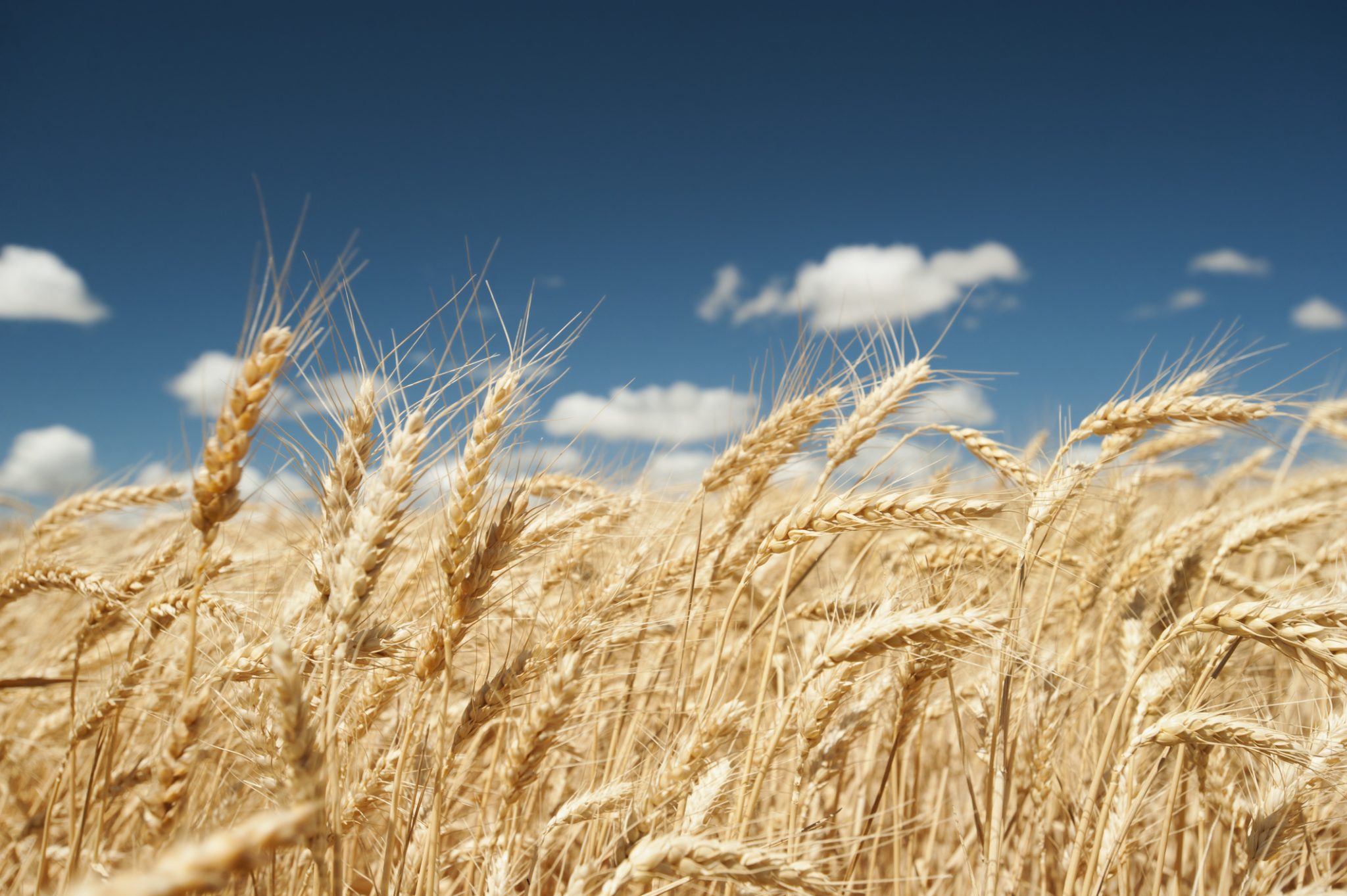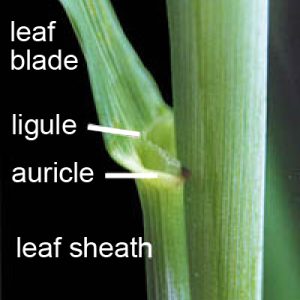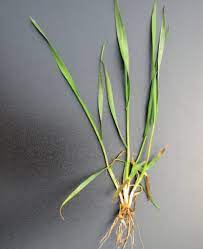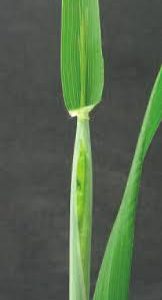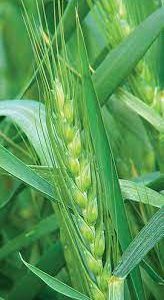Crop Production

The development of a plant occurs through growth stages that are well defined and visually easy to identify. A crop manager can adjust some environmental conditions for good yields. But getting to know how a wheat plant develops is crucial to promoting and applying management practices in the field that can make a crop more sustainable and profitable. A plant’s growth is divided into vegetative and reproductive stages, each with morphological characteristics and physiological processes.
Wheat growth and development are measured by the amount of dry weight accumulation in the plant that happens through photosynthesis, a physiological process of plants to manufacture carbohydrates, proteins, and oils, which is directly related to environmental conditions. In other words, wheat growth and yield result from genetic and environmental interaction during the plant’s life cycle.
Knowing how wheat plants grow can help use management practices more effectively to obtain higher and more sustainable yields. Farmers can manage some environmental factors to maximize yield, such as seeding at the right time, using adequate plant density, fertilizing the soil, and optimizing weed, insect, and disease control while air temperature and solar radiation rely on weather conditions that affect the way plants develop.
The development of a wheat plant is generally divided into five steps: leaf and tiller development, stem elongation, heading, flowering, and grain filling and ripening, which were numerically subdivided (table 1) to describe important developments of the plant, as stated by the most used growth stage scale for wheat developed by W. Feekes in 1941. The vegetative phase begins with the emergence (Feekes 1) that takes place when the seedlings arise from the soil surface, followed by the development of tillers (Feekes 2 and 3), and the lengthening of leaf sheaths and the elongation of stems with new leaves made visible (Feekes 4 to 10). After that, the reproductive stages begin when the panicles (heads) start to emerge from the top of the plants’ stems (Feekes 10.1 to 10.5), continue through flowering (10.5.1 to 10.5.4), and end with the ripening of the kernels (Feekes 11.1 to 11.4).
- Figure 1. Leaf structure.
- Figure 2. Tillering.
- Figure 3. Flag leaf.
- Figure 4. Heading.
Table 1. General Wheat Growth Stages Developed by Feekes
| Feekes Growth Stage | Growth Stage Title | General Division |
|---|---|---|
| Feekes 1 | Emergence | Tillering |
| Feekes 2 | Beginning of tillering | Tillering |
| Feekes 3 | Ending of tillering | Tillering |
| Feekes 4 | Lengthening of leaf sheaths | Tillering |
| Feekes 5 | Leaf sheaths strongly erect | Tillering |
| Feekes 6 | First node of stem visible | Stem Elongation |
| Feekes 7 | Second node of stem visible | Stem Elongation |
| Feekes 8 | Last leaf visible (still rolled up) | Stem Elongation |
| Feekes 9 | Ligule of last leaf visible | Stem Elongation |
| Feekes 10 | Last leaf sheath completely out | Stem Elongation |
| Feekes 10.1 | Beginning of heading | Heading |
| Feekes 10.2 | 25% of heading completed | Heading |
| Feekes 10.3 | 50% of heading complete | Heading |
| Feekes 10.4 | 75% of heading complete | Heading |
| Feekes 10.5 | 100% of heading complete | Heading |
| Feekes 10.5.1 | Beginning of flowering | Flowering |
| Feekes 10.5.2 | Flowering complete to top of ear | Flowering |
| Feekes 10.5.3 | Flowering over at base of ear | Flowering |
| Feekes 10.5.4 | Flowering over, kernel watery ripe | Flowering |
| Feekes 11.1 | Milky ripe (milk stage) | Ripening |
| Feekes 11.2 | Mealy ripe (soft dough) | Ripening |
| Feekes 11.3 | Kernel hard (hard dough) | Ripening |
| Feekes 11.4 | Kernel ripe | Ripening |
Table 2 presents a more detailed description of each growth stage and associated management practices.
Table 2. Detailed Wheat Growth Stages Developed by Feekes and Management Practices Related to Each
| Stage | Description | Management Practice |
|---|---|---|
| Feekes 1 | Coleoptile is present above the soil surface. Up to three leaves develop before tillering and seminal root system is initiated. The crown forms between the seed and the soil surface. | Check stand and uniformity, targeted stand of 15 to 25 plants/square foot. Check for weeds and apply herbicides if necessary. Scout for early season pests, especially armyworm and aphids (spray if you detect 10+ greenbugs or sugarcane aphids per foot of row). |
| Feekes 2 Feekes 3 | Plants begin to tiller (producing side shoots), starting at the axils of the first four or more true leaves of the main stem. Secondary tillers may develop from the base of primary tillers. The crown root system increases extensively. Lower temperatures and short day length induce vernalization (3 to 8 weeks below 50 degrees). Once vernalization is complete, tillering is finished. Growing point differentiates and the embryonic head reaches the double ridge stage. | Scout for insects and weeds. Fall weed control is generally more effective, reducing weed competition. Time for early N applications (20 to 30 pounds/acre). Target 70 tillers/square footb by the end of fall. If stand is thin, additional N may help extra tillering over the spring. Scout for weeds and insects (spray if you detect 6 sugarcane aphids per foot of row). |
| Feekes 4 Feekes 5 | Feekes 4 Feekes 5 Leaf sheaths begin to lengthen, and pseudo-stem starts to become erect until fully erect and leaf sheaths are elongated. Developing heads reach the terminal spikelet stage and are pushed up into the pseudo-stem. The potential number of spikelets per head is determined. Any additional tiller formed after this point will not contribute to yield. | Optimal time to make spring topdress N applications and to apply post-emergence herbicides for weed control. Scout for soilborne virus diseases and early season foliar diseases. Scout for insects (spray if you detect 2 sugarcane aphids per stem). |
| Feekes 6 | Also known as jointing, the first node is visible at the base of the shoot. The head is visible at this point and spike contains all potential spikelets and florets. | Cutoff for applying 2,4-D and dicamba herbicides and for N applications to prevent injury. Evaluate disease pressure and consider a first fungicide application. |
| Feekes 7 | Second node of the stem is visible above the soil line. | Plant growth regulators may be applied at this point. Scout for insects, weeds, and diseases. |
| Feekes 8 | The flag leaf starts to emerge from the whorl approximately 10 days after last stage. Two nodes are distinctly visible on the stem. | Scout for diseases and insects (spray if you detect 5 sugarcane aphids per stem). |
| Feekes 9 | The flag leaf is completely emerged from the whorl. Flag leaf and the next-to-last leaf combined account for 70 to 90 percent of the photosynthates used for grain fill. | Scout for insects and diseases. Monitor foliar diseases on the lower canopy and consider a fungicide application to protect the flag leaf. |
| Feekes 10 | The head is inside the leaf sheath giving it a swollen appearance. The developing head is pushed through the flag leaf sheath. Low temperatures may cause damage to the developing head. | Scout for insects and diseases. Application of 2,4-D can severely affect yield. Monitor heads for Fusarium head blight (scab) and, if necessary, apply fungicide. |
| Feekes 10.1 Feekes 10.2 Feekes 10.3 Feekes 10.4 Feekes 10.5 | The first heads escape through a split in the flag leaf sheath and all heads are at Feekes 10.5. Usually, it takes 3 to 5 days to the head to be fully extended above the flag leaf. Low temperatures may cause damage to the developing head. | Keep monitoring heads for Fusarium head blight (scab). Check fungicide label for preharvest interval restrictions. Scout for insects (spray if you detect 10 sugarcane aphids per head). |
| Feekes 10.5.1 Feekes 10.5.2 Feekes 10.5.3 | Flowering begins after the head is fully emerged and lasts 3 to 5 days. The number of flowers pollinated determines the number of kernels per head. Low temperatures may affect final yield. | Scout for insects and diseases. Take notes of weed escapes for future management. |
| Feekes 10.5.4 | Rapid increase in grain size, but little dry matter accumulation. A clear fluid can be squeezed from the developing kernels. | |
| Feekes 11.1 | Increase in solids content in the endosperm. A milklike fluid can be squeezed out of the kernels. | Monitor heads for Fusarium head blight (scab) and adjust yield prediction and marketing plan if present. Scout for wheat head armyworm. Severe heat or water stresses can reduce grain test weight. |
| Feekes 11.2 | The kernels rapidly accumulate starch and nutrients. Material squeezed out of the kernel has a dough consistency. | Monitor heads for Fusarium head blight (scab) and adjust yield prediction and marketing plan if present. Scout for wheat head armyworm. Severe heat or water stresses can reduce grain test weight. |
| Feekes 11.3 | Kernels achieve maximum dry weight and are physiologically mature. Kernel moisture decreases from 40 to 30 percent. Kernels are hard and difficult to divide with thumbnail. | |
| Feekes 11.4 | Kernel moisture decreases from 30 to 15 percent and green plant tissue becomes straw. | Harvest when grain moisture reaches 15 percent to avoid losses in test weight and grain quality. |
Descriptions of the vegetative and reproductive stages represent the development of an individual plant, but for staging a wheat field, at least 50 percent of the plants need to be at that stage or beyond. To increase the accuracy, make sure to collect plants from different points of the field, including at least one 10-plant sample for every 10 acres to obtain adequate determination of the average stage of development. Plants evaluated should be randomly selected at each inspection site, but avoid selecting only the largest or most vigorous ones. To ensure random selection of plants within a row, try to evaluate consecutive plants with undamaged main stalks.
The appropriate identification of growth stages will guarantee that people involved in wheat production use the same terminology when discussing plant development, reducing the risk of damaging a field with some management practice decision. For example, if any herbicide treatment is recommended after wheat reaches the Feekes 6 stage or a fertilizer application at the right time provides a greater response, the proper identification of the stage is necessary or a misapplication of the products may occur.
References
- FEEKES W. (1941). De Tarwe en haar milieu. Vers. XVII Tech. Tarwe Comm. Groningen, 560-1.
- ALABAMA COOPERATIVE EXTENSION SYSTEM. Small Grains – Insect, Disease, and Weed Control Recommendations for 2022. IPM-0458. Available at: Small Grains IPM Guide – Alabama Cooperative Extension System (aces.edu)
 Eros Francisco, Extension Grain Crops Specialist, Assistant Professor, Crop, Soil, and Environmental Sciences, Auburn University
Eros Francisco, Extension Grain Crops Specialist, Assistant Professor, Crop, Soil, and Environmental Sciences, Auburn University
New January 2023, How a Wheat Plant Develops: Identifying Growth Stages, ANR-2970

